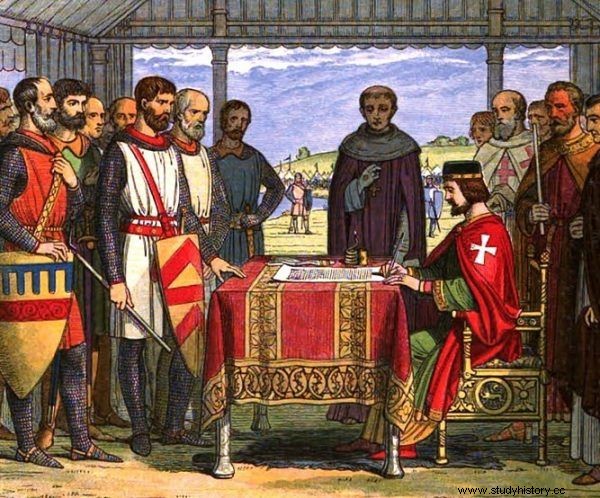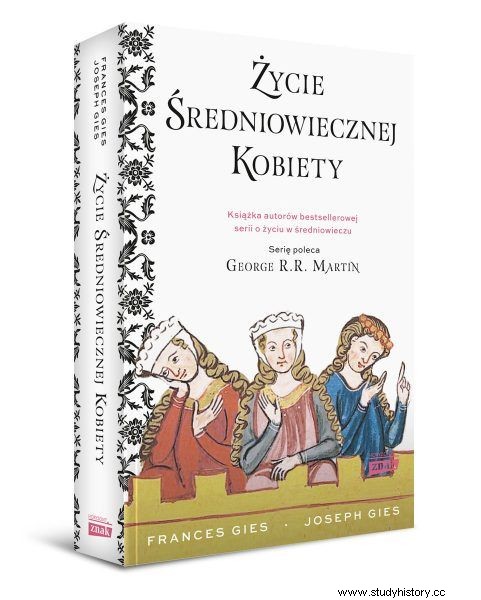The heiress's hand and the right to her marriage? Marriage to a well-endowed widow? A fairy-tale wedding with a former queen? Not difficult for one who wants it! In the Middle Ages, anything was possible - including the purchase of a bride. It was enough to ask. And reach deep enough into your pocket ...
In the dark ages (and for several centuries thereafter), marriage had little to do with romanticism. On the contrary, they were treated as a trade involving the girl and her dowry. Usually, it was the future in-laws who chose mates for their children and then negotiated the terms of marriage. As Francis and Joseph Gies report in their latest book "The Life of a Medieval Woman":
The bride's family contributed a dowry or part of their property, which for aristocrats or merchants usually meant land or money, and for peasants - clothing, household and kitchen utensils. (...) My husband contributed his property, usually land - according to custom, one third of their estates, sometimes as much as a half, and sometimes certain plots of land or plots.
This contribution was not so much a payment for the hand of the chosen one, but rather a kind of insurance in the event of the premature death of a man. Thanks to this, the widow (and possible children) did not have to worry about survival - she lived on the inherited land. At least until she stood on the wedding carpet again, because then the permanent property returned to the family of the deceased husband.

King John without the Earth (in the picture he signs the Great Charter of Freedom) made a lot of money selling his first wife.
I will sell the bride cheap
There were times, however, that a bachelor had to pay for the right to marry a particular woman - dearly. This money was not a security in the event of widowhood, but a "compensation" for the guardian of the future bride for the losses associated with giving her back to her husband. In The Life of a Medieval Woman, Francis and Joseph Gies report:
The feudal lord could also "sell" his ward, demanding a fee from the pretender to the woman's hand for the privilege of taking control of the heiress's property and as compensation for the loss of a source of some of his income. In fact, welfare of women was widely recognized as a kind of capital and was resold and purchased like insurance policies .
In this way, in 1214, the English king John without the Land "monetized" his first wife, Avis of Gloucester - 15 years after their marriage was annulled (after all, there were no divorces as such in the Middle Ages)! From the ruler it was bought by the Earl of Essex, Geoffrey FitzGeoffrey, for the amount - a trifle - 20,000 marks . For comparison:a certain courtier of the ruler in 1207 paid 1,200 marks for a marriage with an heiress. For another, the wedding of a widow "with her inheritance, part of the dowry and her dowry" cost only 100 marks. Meanwhile, for the equivalent of one mark, you could then buy ... a good cow.
FitzGeoffrey enjoyed his "acquisition" for only two years. In 1216, he died during a knightly tournament. Unfortunately, he did not manage to settle the royal debt by that time, and therefore a colossal obligation fell on his heirs.

The text is based on the latest volume of the best-selling series by Francis and Joseph Gies "The Life of a Medieval Woman" , which was released by the Znak Horyzont publishing house.
Interestingly, the woman was also able to extract something from her pocket to be able to decide for herself who she would marry (and if at all). In the accounts of John from the beginning of the thirteenth century, there is an entry that states that:"Quenilda, daughter of Richard FitzRoger, owes twenty marks and two stumps for the fact that she is allowed to marry whomever she wants on the advice of his friends, if he does not marry anyone who is the king's enemy. " In turn, another woman, after the death of her spouse, bought herself the right to remain unmarried for 20 marks.
The price of freedom was therefore not particularly high, especially compared to the amount that had to be paid for the hand of the ex-queen. Still, the very fact of having to pay a fee to choose a life partner seems outrageous and even unimaginable today.
Source:
Trivia is the essence of our website. Short materials devoted to interesting anecdotes, surprising details from the past, strange news from the old press. Reading that will take you no more than 3 minutes. This particular material is based on:
- Francis and Joseph Gies, The Life of a Medieval Woman , Horizon 2019 sign.
Check where to buy "The Life of a Medieval Woman":
